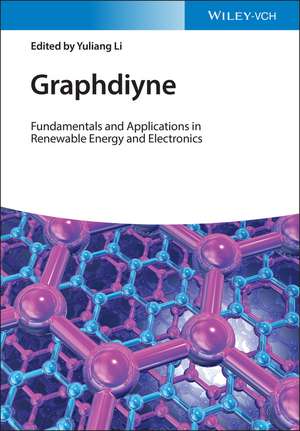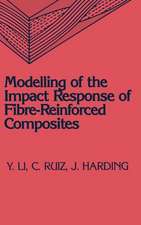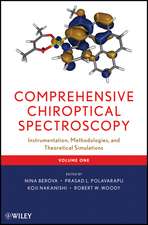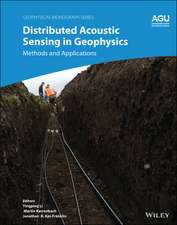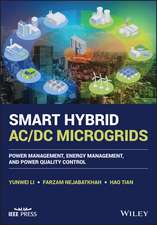Graphdiyne – Fundamentals and Applications in Renewable Energy and Electronics
Autor Y. Lien Limba Engleză Hardback – 2 noi 2021
Preț: 851.19 lei
Preț vechi: 989.76 lei
-14% Nou
Puncte Express: 1277
Preț estimativ în valută:
162.87€ • 170.51$ • 134.77£
162.87€ • 170.51$ • 134.77£
Carte disponibilă
Livrare economică 15-29 martie
Livrare express 04-08 martie pentru 74.49 lei
Preluare comenzi: 021 569.72.76
Specificații
ISBN-13: 9783527347872
ISBN-10: 3527347879
Pagini: 400
Dimensiuni: 175 x 250 x 24 mm
Greutate: 1.59 kg
Editura: Wiley Vch
Locul publicării:Weinheim, Germany
ISBN-10: 3527347879
Pagini: 400
Dimensiuni: 175 x 250 x 24 mm
Greutate: 1.59 kg
Editura: Wiley Vch
Locul publicării:Weinheim, Germany
Cuprins
1. Introduction 1.1 The Development of Carbon Materials 1.2 Models and Nomenclature 1.3 Brief Introduction of Graphdiyne 2. Basic Structure and Band Gap Engineering: Theoretical Study of GDYs 2.1 Structures 2.1.1 Theoretical Prediction and Classification 2.1.2 Geometric Structures of GDYs 2.2 Electronic Structures 2.2.1 Dirac Cones in a-,ß-, and 6,6,12-Graphynes 2.2.2 Semiconductor Properties of ¿-Graphynes 2.2.3 Electronic Structures Comparison of GDYs 2.2.4 Structure and Size Based Electronic Properties 2.3 Mechanical Properties 2.3.1 Mechanical Properties of GDYs 2.3.2 Mechanical Properties of ¿-Graphyne 2.3.3 Mechanical Properties of ¿-Graphdiyne 2.3.4 Mechanical properties of ¿-graphynes family 2.4 Layers Structure of Bulk GDYs 2.4.1 Stacking Modes for Bilayer a-Graphyne 2.4.2 Stacking modes for bilayer ¿-graphyne 2.4.3 Stacking Modes for Bilayer ¿-Graphdiyne 2.4.4 Identification on the Stacking Structures of GDY 2.5 Band Gap Engineering of GDYs 2.5.1 Influences of Nonmetal Doping 2.5.2 Influences of Chemical Modification and Functionalization 2.5.3 Tunable Band Gap under Strain 2.5.4 Graphyne Nanoribbons under Strain or Electric Field 3. GDY Synthesis and Characterization 3.1 Synthesis 3.1.1 Basic Chemistry 3.1.2 Synthesis of GDY Related Molecular Fragments 3.1.3 Cu-Surface-Mediated Synthesis 3.1.4 Template Synthesis 3.1.5 Interfacial Synthesis 3.1.6 Vapour-liquid-solid (VLS) Growth 3.1.7 Chemical Vapor Deposition (CVD) Growth 3.1.8 Explosion Approach 3.2 Characterization 3.2.1 Raman spectroscopy 3.2.2 X-ray photoelectron spectroscopy (XPS) 3.2.3 X-ray absorption spectroscopy (XAS) 3.2.4 Microscope Technology 3.2.5 X-ray Diffraction (XRD) Technique 3.2.6 Others 3.3 Summary 4 Functionalization of GDYs 4.1 Heteroatom Doping 4.1.1 Nitrogen and Phosphor Doping 4.1.2 Halogen Doping 4.1.3 Sulphur, Boron, Hydrogen and Other Non-Mental Heteroatoms 4.1.4 Dual Heteroatom Doping 4.2 Metal Decoration 4.2.1 Metal Atomic Decoration 4.2.2 Metallic Compounds 4.3 Absorption of Guest Molecules 5 Graphdiyne-Based Materials in Catalytic Applications 5.1. Graphdiyne-based zero-valent metal atomic catalysts 5.1.1 Synthetic strategy for GDY-based ACs 5.1.2 Adsorption Geometry and Electronic Structures of GDY-based ACs 5.1.3 Morphology and valence states of GDY-based ACs 5.1.4 Application of GDY-based ACs 5.2 GDY-based heterojunction catalysts 5.2.1 Hydrogen evolution reaction on GDY-based heteros 5.2.2 Oxygen evolution reaction on GDY-based heterojunction 5.2.3 Photo-/photoelectrocatalytic oxygen evolution reaction 5.2.4 Applied for overall water splitting 5.2.5 Applied for other catalysis 5.3 Graphdiyne Based Metal-free catalysts 5.3.1 Applied for water splitting 5.3.2 Applied for Oxygen Reduction Reactions 5.3.3 Applied for photocatalysis 6 Graphdiyne-Based Materials in Rechargeable Batteries Applications 6.1 Introduction 6.2 Lithium-Ion Battery Anodes 6.3 Graphdiyne Derivatives for LIB Anodes 6.4 Sodium Ion Battery Anodes 6.5 Electrochemical Interface 6.5.1 Protection for LIBs anodes 6.5.2 Protection for LIB cathodes 6.6 Lithium-Sulfur Battery 6.7 Lithium metal anodes 6.8 Supercapacitor Electrodes 6.9 Fuel cells 7. Graphdiyne-Based Materials in Solar Cells Applications 7.1 Introduction 7.2 Perovskite Solar Cells 7.2.1 Graphdiyne-Based Materials in Interfacial Layers 7.2.2 Graphdiyne-Based Materials in Active Layer 7.3 Organic Solar Cells 7.4 Others 7.4.1 Quantum Dots Solar Cells 7.4.2 Dye-sensitized solar cells 7.5 Future Perspectives 8 Graphdiyne: Electronics, thermoelectrics and magnetism applications 8.1 Electronic Devices 8.2 Optic Devices 8.3 Thermoelectric Materials 8.4 Magnetism 9. Graphdiyne-Based Materials in Sensors and Separation Applications 9.1 Sensors 9.1.1 Biomolecules Sensor 9.1.2 Small Molecule Detection Sensor 9.1.3 Other sensors 9.2 Separation 9.2.1 Gas separation 9.2.2 Oil/Water separation 9.3 Conclusion and Perspective 10. Perspectives 10.1 Chemical Synthesis Methodology and Aggregate Structures of Graphdiyne 10.2 Controllable Preparation of Highly Ordered Graphdiyne 10.3 Basic Physical Properties and Applications of Graphdiyne Index
